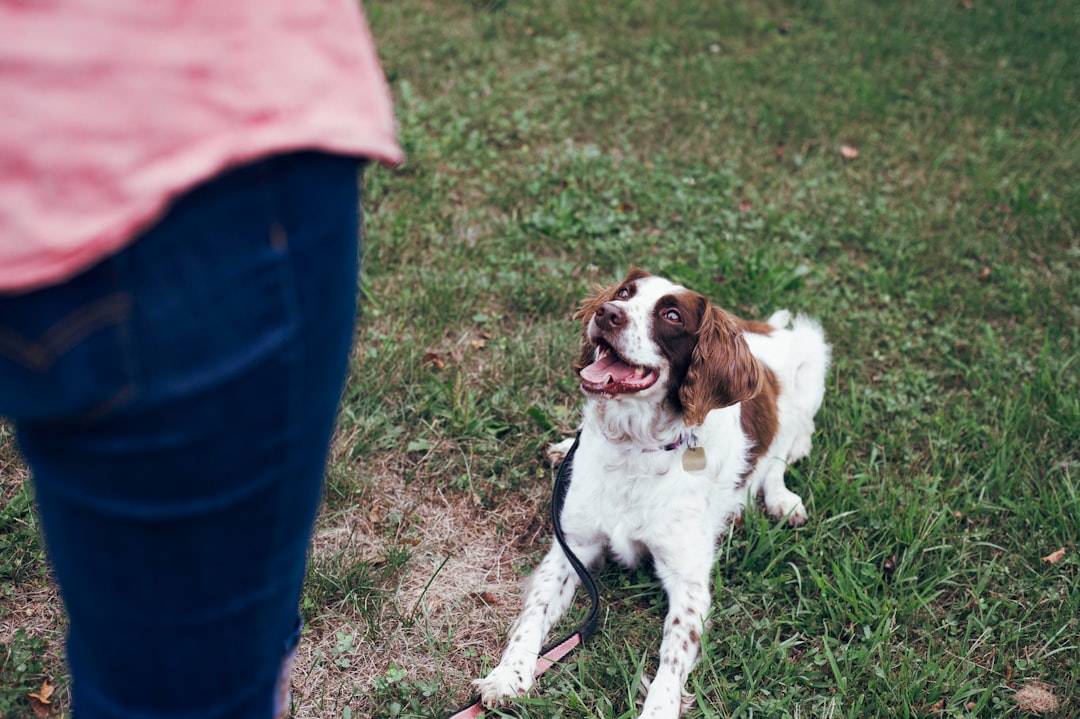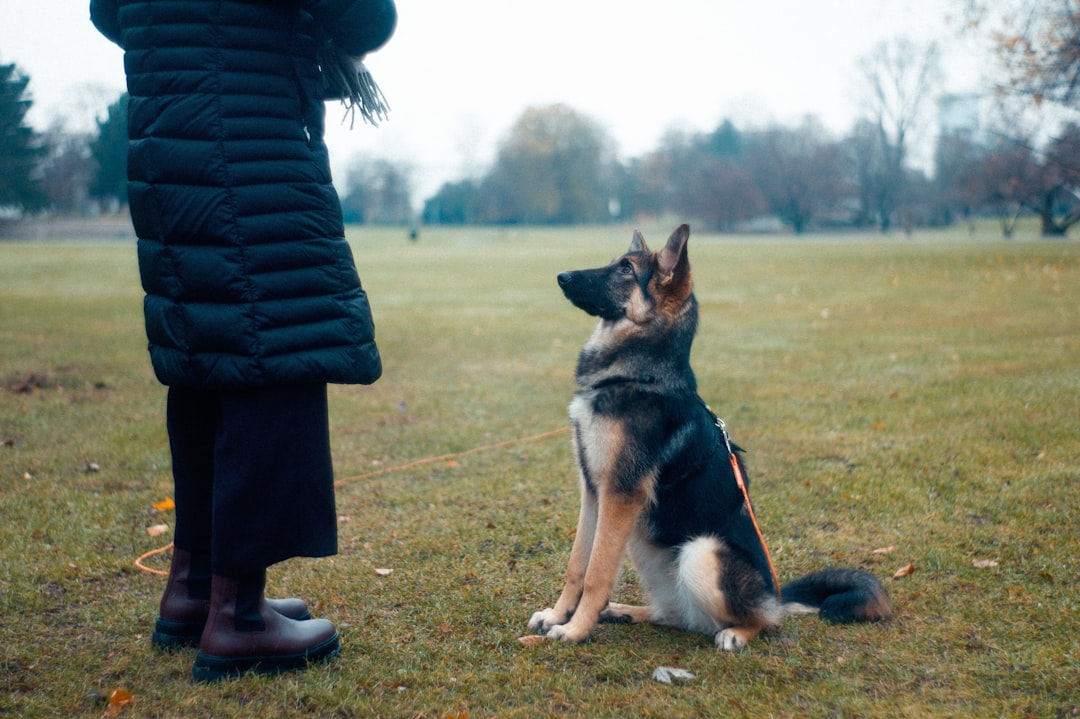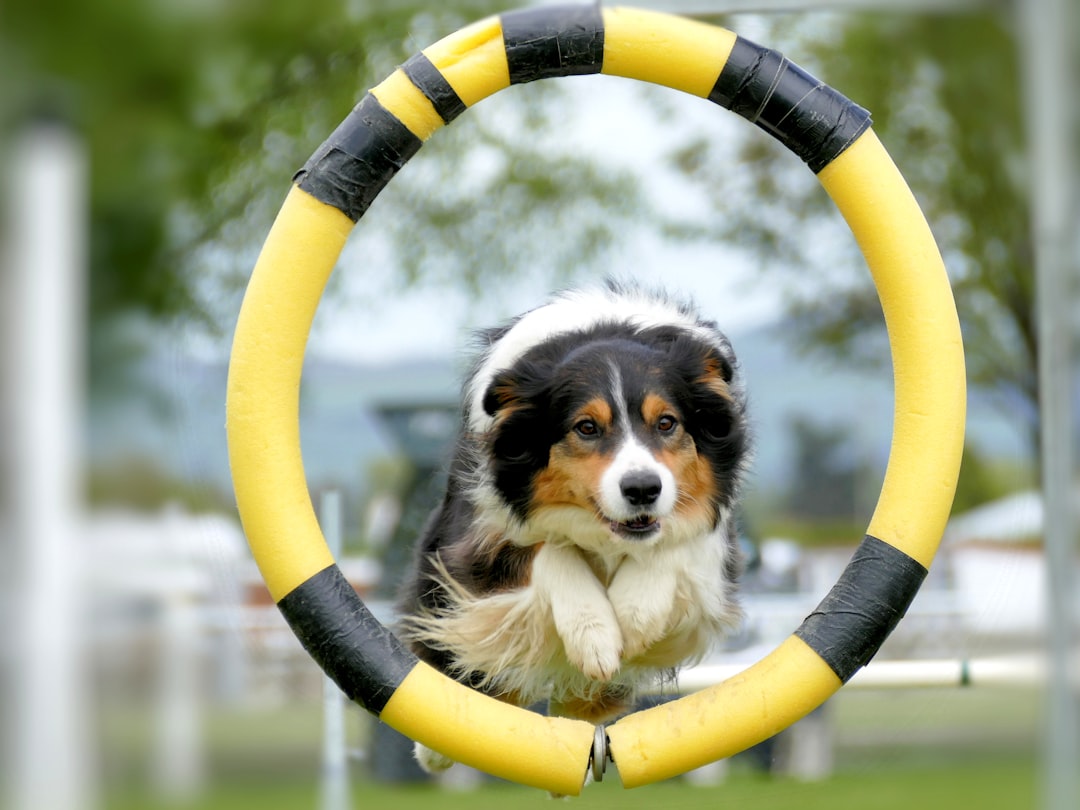An overview of the four quadrants of dog training, including positive reinforcement, negative reinforcement, positive punishment, and negative punishment, and how to effectively implement these methods for effective dog training.
Mastering the Four Quadrants: A Comprehensive Guide to Effective Dog Training
Overview of the Four Quadrants of Dog Training
The four quadrants of dog training, including positive reinforcement, negative reinforcement, positive punishment, and negative punishment, constitute the fundamental framework for modifying and shaping canine behavior. These quadrants offer a comprehensive approach to training that addresses both desirable and undesirable behaviors in dogs. It’s important to clarify that the terms “positive” and “negative” in this context do not denote good or bad. Instead, “positive” refers to adding a stimulus to a situation, while “negative” entails removing a stimulus from a situation. Similarly, “reinforcement” is aimed at increasing or maintaining a behavior, whereas “punishment” is intended to decrease the likelihood of a behavior recurring [1].
Understanding the distinct characteristics of each quadrant is essential for effective dog training. For instance, positive reinforcement involves rewarding your dog to encourage the repetition of a desired behavior, such as giving treats when they obey a command. On the other hand, negative reinforcement entails removing an aversive stimulus to reinforce a behavior, like releasing pressure from a leash when the dog responds to a cue. Positive punishment involves applying an aversive consequence to discourage an undesirable behavior, such as a firm “no” when the dog engages in inappropriate chewing. Lastly, negative punishment involves withdrawing a pleasant stimulus to deter unwanted behavior, for example, ignoring the dog when they jump on guests. By comprehensively understanding and utilizing these quadrants, dog owners can effectively communicate with their pets and address behavioral challenges.
Understanding the distinct characteristics of each quadrant is essential for effective dog training. For instance, positive reinforcement involves rewarding your dog to encourage the repetition of a desired behavior, such as giving treats when they obey a command. On the other hand, negative reinforcement entails removing an aversive stimulus to reinforce a behavior, like releasing pressure from a leash when the dog responds to a cue. Positive punishment involves applying an aversive consequence to discourage an undesirable behavior, such as a firm “no” when the dog engages in inappropriate chewing. Lastly, negative punishment involves withdrawing a pleasant stimulus to deter unwanted behavior, for example, ignoring the dog when they jump on guests. By comprehensively understanding and utilizing these quadrants, dog owners can effectively communicate with their pets and address behavioral challenges.
Understanding the distinct characteristics of each quadrant is essential for effective dog training. For instance, positive reinforcement involves rewarding your dog to encourage the repetition of a desired behavior, such as giving treats when they obey a command. On the other hand, negative reinforcement entails removing an aversive stimulus to reinforce a behavior, like releasing pressure from a leash when the dog responds to a cue. Positive punishment involves applying an aversive consequence to discourage an undesirable behavior, such as a firm “no” when the dog engages in inappropriate chewing. Lastly, negative punishment involves withdrawing a pleasant stimulus to deter unwanted behavior, for example, ignoring the dog when they jump on guests. By comprehensively understanding and utilizing these quadrants, dog owners can effectively communicate with their pets and address behavioral challenges.
Understanding How Dogs Learn Through the Quadrants
Understanding how dogs learn is essential for effective dog training. Unlike humans, dogs have their own unique ways of processing information and responding to stimuli. Positive reinforcement is a fundamental concept in dog training, which involves rewarding a dog to encourage desired behavior. For example, when a dog obeys a command and is rewarded with a treat, it reinforces the positive behavior, making it more likely to be repeated. This method of training helps to build a strong bond between the dog and its owner, fostering trust and cooperation.
Moreover, negative reinforcement is another crucial aspect of dog training, where an aversive stimulus is removed to reinforce positive behavior. An example of negative reinforcement is when a dog stops pulling on its leash, and the pressure on the collar is relieved, reinforcing the cessation of the undesirable behavior. Understanding these concepts enables dog owners to effectively communicate with their pets and create a harmonious training environment. By comprehending the unique learning style of dogs and the impact of each quadrant on their behavior, owners can tailor their training methods to suit their pet’s individual needs, ensuring a positive and rewarding training experience.
Understanding how dogs learn through the quadrants is crucial for effective training and behavior modification. For instance, positive reinforcement can be further exemplified by training a dog to perform agility exercises. By rewarding the dog with a favorite toy or a game of fetch after successfully completing an agility course, the positive behavior is reinforced, making the dog more likely to excel in future sessions. Similarly, negative reinforcement can be illustrated by training a dog to walk politely on a leash. When the dog responds to gentle leash pressure by walking calmly, the removal of the pressure serves as a reinforcement, encouraging the dog to continue the desired behavior. By understanding these principles and applying them in training, dog owners can effectively shape their pet’s behavior and strengthen their bond.
 Leveraging Positive Reinforcement in Dog Training
Leveraging Positive Reinforcement in Dog Training
Positive reinforcement-based methods play a pivotal role in dog training by fostering desirable behaviors. By utilizing positive reinforcement, such as rewarding a dog with treats, praise, or play for exhibiting positive conduct, a strong bond and trust can be established between dogs and their owners. This approach not only encourages learning but also strengthens the human-canine relationship, creating a positive and enriching training experience.
Positive reinforcement is a powerful tool that can lead to the development of reliable and consistent behaviors in dogs. For example, when a dog is taught to sit and is rewarded with a treat immediately after accomplishing the command, the dog is more likely to repeat the behavior in anticipation of another reward. This method is not only effective in teaching basic commands but can also be applied to more complex behaviors such as agility training, obedience competitions, and even therapy dog work.
Moreover, positive reinforcement-based training methods have been found to be particularly effective in modifying and shaping the behavior of dogs without causing any fear or distress. Dogs respond well to positive reinforcement, and it allows them to associate good behavior with positive outcomes, making them more inclined to exhibit these behaviors consistently. This not only enhances the overall training experience but also contributes to the well-being and emotional stability of the dog.
Incorporating positive reinforcement in dog training not only yields favorable results but also promotes a harmonious and rewarding relationship between dogs and their owners. Through the strategic use of positive reinforcement, owners can mold their dogs’ behavior while building a foundation of trust and mutual respect.
Implementing Negative Reinforcement Effectively
Negative reinforcement in dog training involves the removal of an aversive stimulus to encourage dogs to repeat desired behaviors. This can be exemplified by the following scenario: When a dog is asked to sit and complies, the pressure from a corrective collar is released, prompting the dog to associate sitting with the removal of the aversive stimulus. This serves to reinforce the desired behavior of sitting.
It is crucial to understand that the application of negative reinforcement should be careful and appropriate. When used correctly, negative reinforcement can be an effective tool in dog training, but it should never cause distress or harm to the dog. This method should be employed in a way that promotes the well-being and understanding of the dog, ensuring that it is not perceived as punishment but as a means to communicate and reinforce positive behaviors. By implementing negative reinforcement effectively, dog owners can encourage their pets to exhibit desired behaviors while maintaining a positive and respectful training environment.
Negative reinforcement can be further illustrated by teaching a dog to walk politely on a leash. When the dog responds to gentle leash pressure by walking calmly, the release of pressure acts as a reinforcement, strengthening the behavior of walking without pulling. By consistently applying this method, dogs learn to associate calm leash walking with the removal of pressure, ultimately leading to improved leash manners. This approach demonstrates the effective use of negative reinforcement in shaping a dog’s behavior while promoting a positive and cooperative training experience.
Positive Punishment as a Training Tool
Positive punishment is a method used in dog training to discourage undesirable behaviors by introducing an unpleasant consequence immediately after the behavior occurs. An example of positive punishment is using a sharp “no” command when a dog engages in inappropriate chewing. In this scenario, the dog’s behavior of chewing on inappropriate items is followed by an unpleasant consequence, which is the “no” command. This aims to decrease the likelihood of the dog repeating the unwanted behavior in the future.
It’s important to note that the proper and ethical use of positive punishment is crucial in dog training. When applied incorrectly or excessively, positive punishment can lead to fear, anxiety, and stress in dogs, ultimately damaging the trust and bond between the dog and its owner. Therefore, positive punishment should be used sparingly and in conjunction with positive reinforcement to ensure a balanced and humane approach to training. By incorporating positive reinforcement alongside positive punishment, dog owners can effectively communicate with their dogs, encourage desired behaviors, and discourage unwanted behaviors without compromising the well-being of the animals.
Positive punishment can also be exemplified by addressing jumping behavior in dogs. When a dog jumps on people, a firm “no” command is used to discourage the behavior, followed by the avoidance of attention. This application of positive punishment communicates to the dog that jumping results in the withdrawal of attention, leading to a decrease in the unwanted behavior over time. This example showcases the use of positive punishment as a tool to modify behavior while maintaining a respectful and compassionate training environment.
 Utilizing Negative Punishment for Behavior Correction
Utilizing Negative Punishment for Behavior Correction
Negative punishment is a valuable tool in dog training, as it can be used to discourage and reduce unwanted behaviors in dogs. This quadrant involves removing a desired stimulus to decrease the likelihood of a behavior occurring again. For example, if a dog jumps on a visitor, the visitor can turn away and ignore the dog, which removes the desired attention the dog seeks. This absence of attention acts as a form of negative punishment and can help to decrease the likelihood of the dog repeating the unwanted behavior.
It is important to note that negative punishment should be used judiciously and in conjunction with positive reinforcement. By incorporating negative punishment alongside positive reinforcement, dog owners can effectively communicate with their pets and guide them toward more appropriate behaviors. When applied correctly, negative punishment can play a crucial role in shaping a dog’s behavior and fostering a strong bond between the dog and its owner. By understanding and implementing negative punishment appropriately, dog owners can effectively address undesirable behaviors in their pets while promoting a positive and supportive training environment.
An example of negative punishment can be demonstrated in the context of barking behavior. When a dog excessively barks for attention, using negative punishment by temporarily leaving the room or withdrawing attention can convey the message that barking leads to the removal of desired interactions. Over time, this approach promotes a decrease in barking, illustrating the effective use of negative punishment in modifying behavior while maintaining a respectful and empathetic training environment.
 The Balanced Approach to Dog Training Methods
The Balanced Approach to Dog Training Methods
When it comes to dog training, a balanced approach is crucial for addressing the diverse needs of different dogs. This method recognizes the significance of utilizing all four quadrants interchangeably, taking into account the individual dog’s needs, environmental factors, and specific training requirements. By incorporating positive reinforcement, negative reinforcement, positive punishment, and negative punishment as appropriate, a balanced approach ensures a holistic and tailored training experience for each dog.
For example, a dog with a high prey drive may benefit from a balanced approach that incorporates negative punishment to discourage behaviors such as excessive chasing or prey fixation. At the same time, positive reinforcement can be used to encourage alternative behaviors, such as focusing on the owner or engaging in interactive play. By applying a combination of these quadrants, trainers can effectively address the dog’s natural instincts while promoting desirable behaviors.
Moreover, a balanced approach to dog training acknowledges that no single method fits all dogs. It takes into consideration the unique temperament, learning style, and behavior patterns of individual dogs, allowing trainers to tailor their approach for optimal results. This approach promotes a comprehensive understanding of the dog’s needs, ensuring that training methods are both effective and humane, ultimately leading to a harmonious and well-adjusted canine companion.
Incorporating all four quadrants of dog training in a balanced manner allows for a more nuanced and adaptable approach, ensuring that the training method is tailored to the specific needs of each dog. This approach can lead to a more effective training experience, promoting long-term behavioral changes and a strong bond between the dog and its owner. By recognizing the value of each quadrant and using them interchangeably, trainers can create a customized training plan that addresses the unique requirements of every dog, resulting in a positive and fulfilling training experience for both the dog and its owner.
Addressing Misconceptions and Errors in Dog Training
It’s essential to acknowledge and address common misconceptions and errors that can arise in dog training when applying the four quadrants. One prevalent misunderstanding is the belief that “positive” and “negative” refer to good and bad when, in fact, they denote the addition or subtraction of a stimulus from a situation. This misinterpretation can lead to inappropriate training methods and ineffective communication with the dog. By clarifying these terms and their implications, dog owners can better grasp the nuances of each quadrant and utilize them more effectively in training.
Another common misapplication is the misconception that only positive reinforcement should be used in dog training. While positive reinforcement is an integral part of training, relying solely on this quadrant may limit the ability to communicate with dogs effectively, particularly in cases involving “high drive” or “low drive” dogs. This restriction can hinder the control over a dog’s behavior and responsiveness, potentially leading to unreliable training outcomes. It’s important to emphasize the balanced integration of all four quadrants, as this approach allows for modifying behaviors quickly, effectively, and safely. By dispelling the myth that positive reinforcement alone is the ideal method, dog owners can embrace a more comprehensive and adaptable approach tailored to their dog’s specific needs and behavior.
By addressing these misconceptions, dog owners can gain a clearer understanding of the four quadrants of dog training and avoid common errors that may impede successful training outcomes. Through education and awareness, dog owners can enhance their communication with their pets and build a strong foundation for effective training techniques, ultimately fostering a harmonious and rewarding relationship with their canine companions.
It is crucial to address misconceptions and errors in dog training to ensure that the four quadrants are applied effectively. For instance, dispelling the misconception that positive reinforcement alone is sufficient can lead to a more comprehensive and adaptable approach to training, tailored to the specific needs of each dog. Additionally, clarifying the terminology associated with the quadrants can promote a more accurate understanding of their application, ultimately enhancing the training experience for both dogs and their owners.
Key Considerations for Effective Dog Training
To effectively train a dog, it is crucial to understand and apply the four quadrants of dog training. Positive reinforcement, negative reinforcement, positive punishment, and negative punishment are the fundamental principles that shape a dog’s behavior. Positive reinforcement involves rewarding a dog with treats, praise, or toys to encourage and maintain desirable behaviors. For example, when teaching a dog to sit, giving a treat when it follows the command reinforces the behavior, making it more likely to sit in the future. On the other hand, negative reinforcement involves removing an aversive stimulus to reinforce a behavior, such as releasing tension on a leash when a dog stops pulling. Understanding these concepts is essential for effective training, as it allows owners to encourage positive behaviors in their dogs while discouraging negative ones.
Additionally, positive punishment and negative punishment play a crucial role in modifying a dog’s behavior. Positive punishment refers to adding an unpleasant consequence to deter an undesirable behavior, like using a sharp “no” or a quick, controlled leash correction to discourage jumping. Conversely, negative punishment involves taking away a desirable stimulus to reduce the likelihood of an unwanted behavior, such as ending playtime when a dog becomes too rough. Using these techniques judiciously and in conjunction with positive reinforcement is vital for shaping a dog’s conduct effectively. Off Leash K9 Training, Fredericksburg, offers comprehensive dog training programs that incorporate these principles, ensuring that dogs of all ages, breeds, and sizes receive the best possible training for a harmonious relationship with their owners. For more detailed insights into these training methods and programs, interested readers are encouraged to visit their website at Off Leash K9 Training, Fredericksburg.
Call to Action and Further Exploration
When it comes to effective dog training, Off Leash K9 Training, Fredericksburg stands out as a leading authority. By offering tailored training techniques for dogs of all ages, breeds, and sizes, they cater to the specific needs of each dog. Whether it’s basic and advanced obedience, board and train, puppy consultation, aggressive dog package, therapy dog development, or in-home training, Off Leash K9 Training provides comprehensive programs to address various training requirements.
Readers are encouraged to explore the diverse range of programs offered by Off Leash K9 Training. For instance, in the board and train program, dogs stay with a certified trainer for a certain period, receiving intensive training and socialization. This immersive approach ensures effective learning and behavior modification, promoting positive outcomes. Additionally, the puppy consultation program focuses on foundational training to establish good behaviors early, setting the stage for a well-mannered and obedient adult dog.
To further benefit from the expertise of Off Leash K9 Training, readers can reach out to them at (571) 200-3073 or via [email protected] for inquiries and consultations. Their commitment to understanding and addressing the unique needs of each dog underscores their dedication to providing effective and compassionate training solutions. For those seeking a comprehensive and tailored approach to dog training, Off Leash K9 Training offers a wealth of resources and expertise to cultivate a strong and harmonious relationship with their canine companions.
[1] Source: https://fredericksburgdogtrainers.com/ Source: https://fredericksburgdogtrainers.com/ Source: https://fredericksburgdogtrainers.com/ Source: https://fredericksburgdogtrainers.com/ Source: https://fredericksburgdogtrainers.com/


 Leveraging Positive Reinforcement in Dog Training
Leveraging Positive Reinforcement in Dog Training Utilizing Negative Punishment for Behavior Correction
Utilizing Negative Punishment for Behavior Correction The Balanced Approach to Dog Training Methods
The Balanced Approach to Dog Training Methods